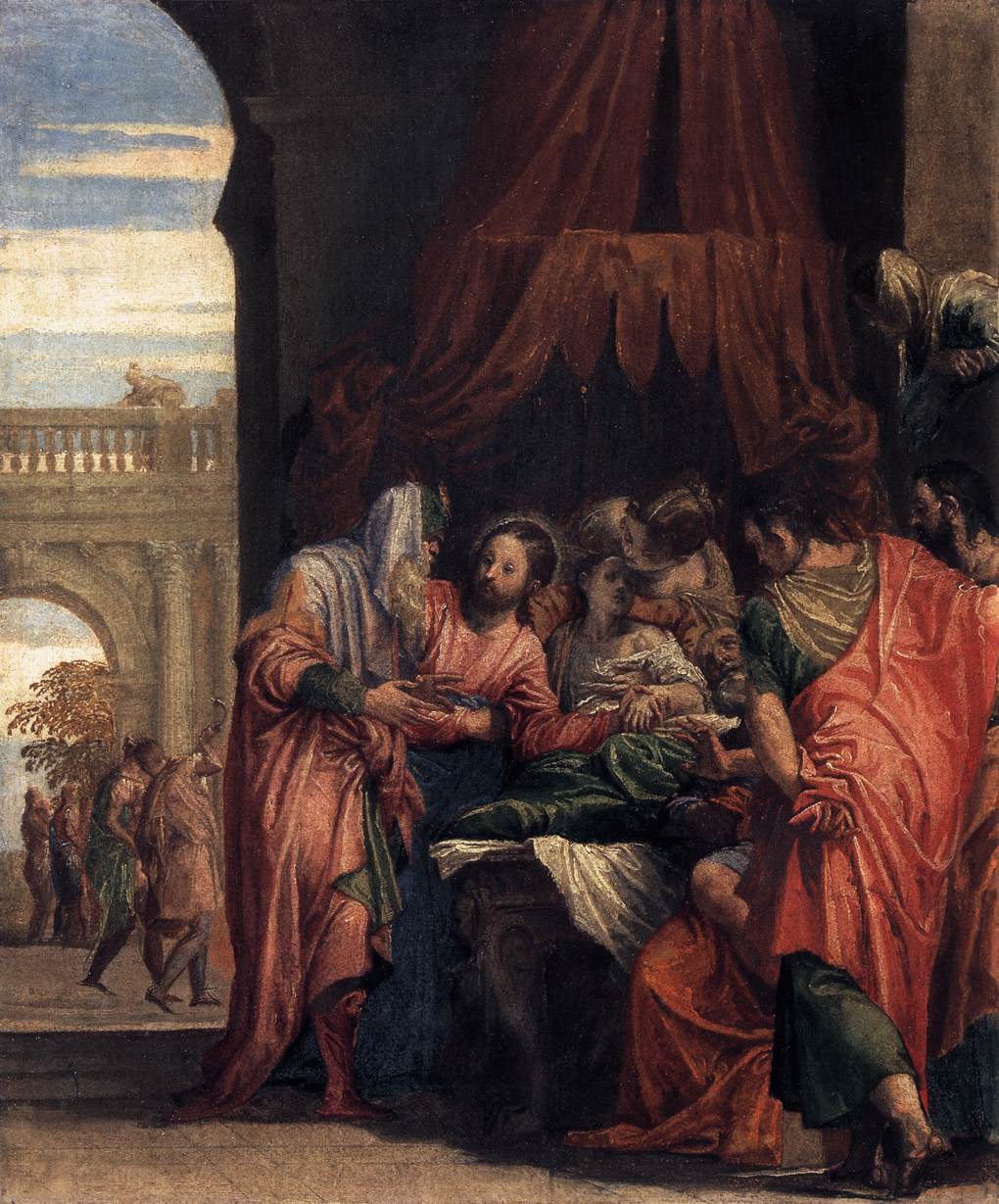
Raising of Jairus' daughter
The raising of Jairus' daughter is a reported miracle of Jesus that occurs in the synoptic Gospels, where it is interwoven with the account of the healing of a bleeding woman. The narratives can be found in Mark 5:21–43, Matthew 9:18–26 and Luke 8:40–56.[1][2]
"Jairus" redirects here. For other uses, see Jairus (disambiguation).Interpretations[edit]
Significance of 12 years[edit]
The combined stories have been used as an example of intercalation ("sandwich story"), where one incident is inserted within another, linked in this case by the connection between the 12-year ailment and the 12-year-old girl.[10][11][12] 12 years also represents the age at which girls come of age in Judaism, and so it appears that Mark and Luke mention the girl's age to emphasise the tragedy of her dying before her father could marry her off, receive a dowry, and expect grandchildren to continue his lineage. Mary Ann Getty-Sullivan (2001): 'Thus the father may have faced financial loss as well as social disgrace, in addition to the personal sorrow of his daughter's illness and death.'[5]
Status of women[edit]
Other links established by Getty-Sullivan include the fact that Jesus calls the bleeding woman 'daughter' while he's on the way to Jairus' daughter; the apparent inferior status of both females as the girl's father represents her (and she is not given her own name, but rather the 'daughter of'), and the woman dares not face Jesus directly to ask for healing, but secretly approaches him from behind to touch his clothes; and the fact that both the woman and girl are rendered ritually unclean by their afflictions, and yet Jesus miraculously heals them by touching them.[5]
According to Barbara E. Reid (1996), it is significant that Luke adds that it is the father's only daughter, and that the Raising of the son of the widow of Nain narrative (only told in Luke's gospel, 7:11–17) mirrors it exactly by stating that he was the mother's only son.[6] Seeing that the genders are reversed here, but nevertheless treated in the same way, Reid concluded that daughters and sons were treated as equals by Luke's Jesus, in contrast to that society's culture, which valued sons far above daughters.[6]
Role of faith[edit]
John Donahue and Daniel Harrington (2015) state that this episode shows that "faith, especially as embodied by the bleeding woman, can exist in seemingly hopeless situations".[13] Michael Keene (2002) states that there is a link between Jairus and the woman: "The link between them is faith since both Jairus and the bleeding woman showed great faith in Jesus".[14] John Walvoord and Roy Zuck (1983) state that: "What appeared to be a disastrous delay in the healing of the woman actually assured the restoration of Jairus' daughter. It was providentially ordered to test and strengthen Jairus' faith."[15] Johann Lange (1960) also states that: "This delay would serve both to try and to strengthen the faith of Jairus."[16]
Description of the raising[edit]
William Robertson Nicoll (1897) suggested that the instruction to feed the girl is placed "in a more prominent position" in Luke than in Mark "to show that as she had been really dead, she was now really alive and well; needing food and able to take it".[17] Frédéric Louis Godet remarks "on the calmness with which Jesus gave the order after such a stupendous event": "As simply as a physician feels the pulse of a patient He regulates her diet for the day".[17] Getty-Sullivan (2001) pointed out that, rather than Mark/Luke's verb ἀνίστημι ("to stand up, to get up"), Matthew used the verb ἐγείρω ("to (a)rise") that is commonly connected to the resurrection of Jesus, suggesting that Matthew wanted to cast Jesus' miraculous revival of Jairus' daughter as a foreshadowing of what would later happen to Jesus himself.[5]: 61